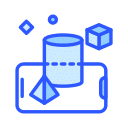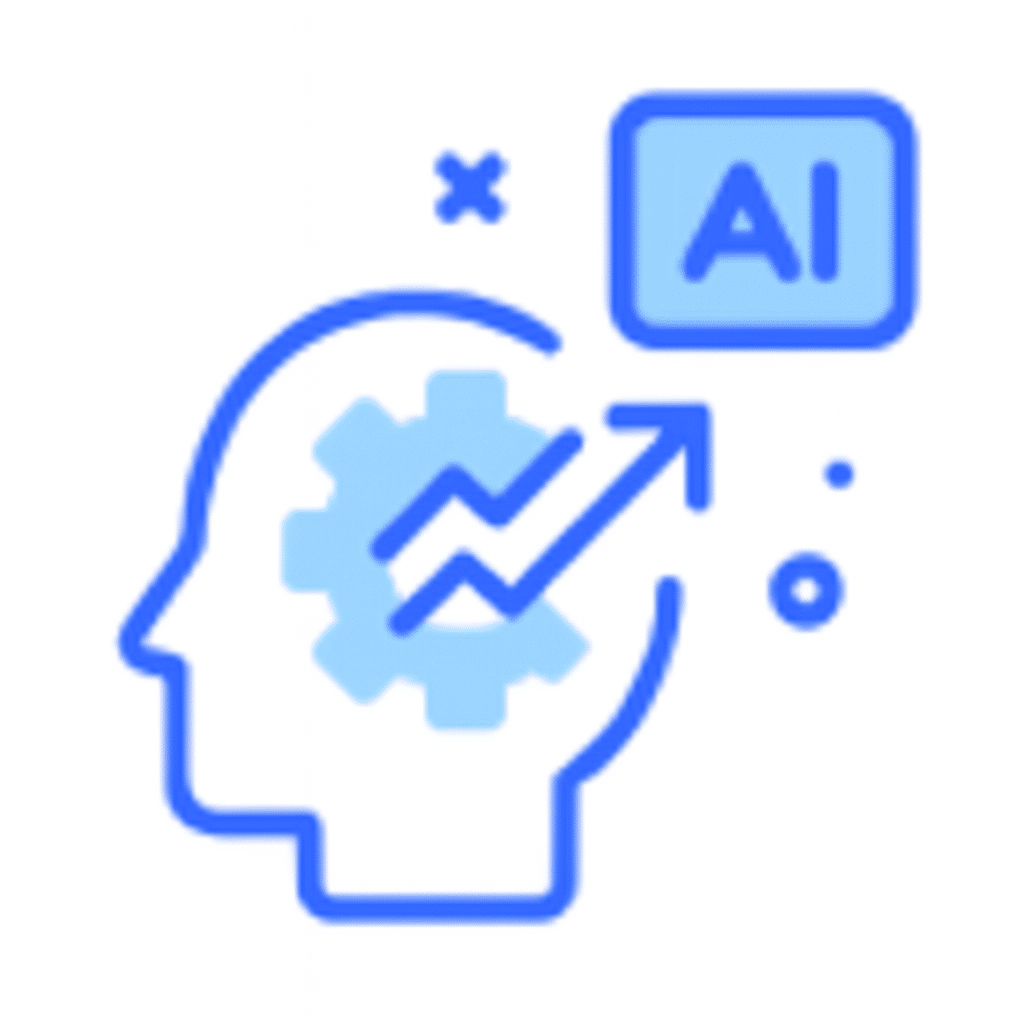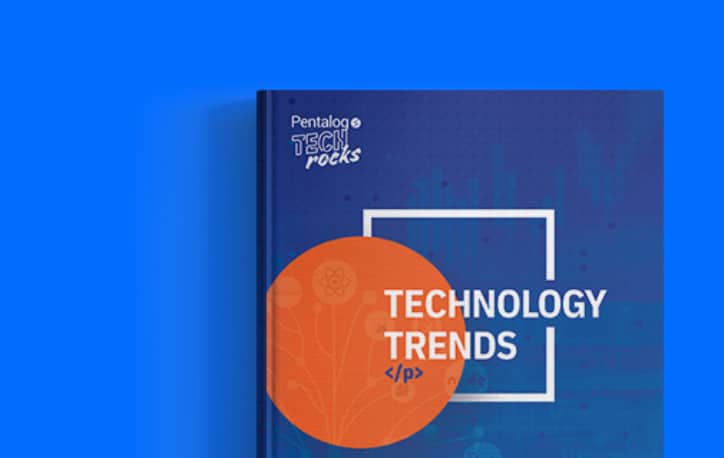Alteryx built its reputation as a powerful analytics and automation platform. But when the problem isn’t just workflow inefficiency – it’s unreliable, inconsistent, duplicated, or poorly structured data – analytics alone won’t fix it. That’s where Data Ladder comes in.
While both the tools operate in the data preparation space, their core DNA differs.
Alteryx is built to support end-to-end analytics.
Data Ladder is a specialist in data quality – focused, fast, and ruthlessly effective at solving dirty data problems (via profiling, cleansing, matching, deduplication, and standardization). It is purpose-built and thus, makes a great Alteryx alternative for data matching and cleansing.
In this quick comparison guide, we break down how Data Ladder and Alteryx stack up on data quality, entity resolution, scalability, and deployment flexibility, so you can decide which platform best suits your data management needs.
Data Ladder vs. Alteryx Comparison: Executive Summary

Want to fix dirty data fast?
[Watch a quick Data Ladder demo to see how it’s done]
Data Matching and Entity Resolution – Where Data Ladder Shines the Brightest
Alteryx does have a fuzzy match tool, but it’s generally suited for simpler, lightweight matching tasks like joining similar entries or deduplicating small datasets. However, when you’re dealing with complex, messy, real-world data – rife with typos, misspellings, inconsistent formats, and multiple identities – achieving data accuracy demands a lot more, making many users look out for an Alteryx data matching alternative. Data Ladder delivers that.
Data Ladder goes far deeper in data matching and is built for enterprise-grade entity resolution with:
- Advanced fuzzy matching algorithms with tunable thresholds
- Phonetic algorithms like Soundex and Metaphone
- Rule-based logic tailored to business-specific scenarios, like customer identity resolution
- Composite matching across multiple fields (e.g., Name + DOB + Email)
- Survivorship rules to retain the most accurate version of a record
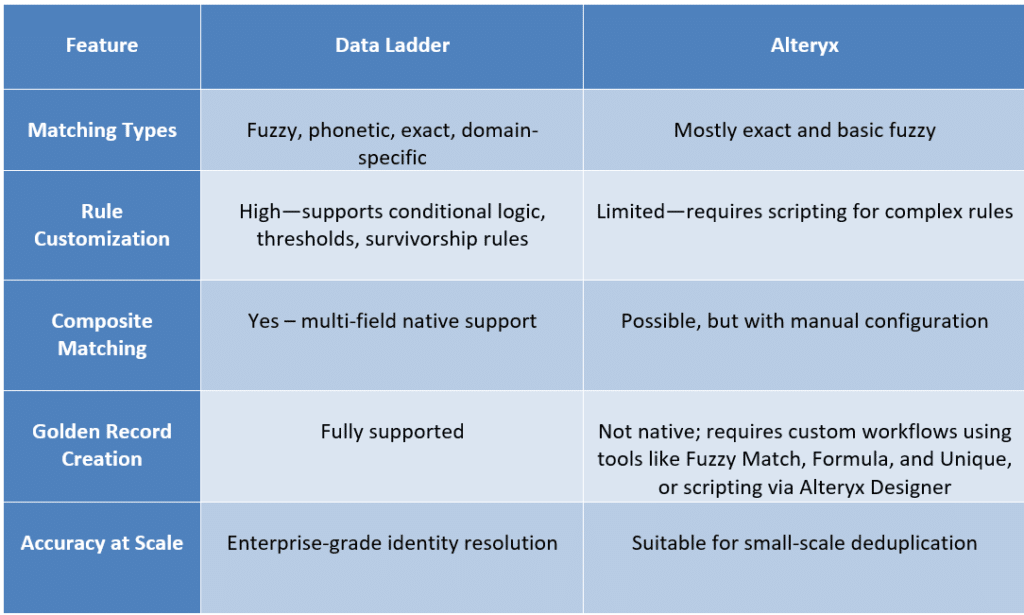
If matching is core to your problem – whether it’s resolving customer identities, merging records across systems, or deduplicating at scale – Data Ladder is the best alternative to Alteryx for the job. It’s purpose-built to handle it. Alteryx isn’t.
Alteryx users can create similar matching outcomes, but it often involves chaining multiple tools or scripting. In contrast, Data Ladder provides purpose-built interfaces to accelerate the process with less technical effort.
Data Quality vs. Data Wrangling
While Alteryx offers powerful capabilities for transforming and preparing data for analysis, it’s not primarily focused on achieving data quality in the sense of profiling, cleansing, and standardizing records to enterprise-ready standards.
If you’re searching for an Alteryx data cleansing alternative, Data Ladder is designed from the ground up for this purpose. It offers:
- Deep data profiling: understand distributions, anomalies, patterns
- Intelligent cleansing: trim whitespace, normalize values, correct patterns
- Deduplication workflows: merge, cluster, suppress duplicates
- Governance-ready outputs: audit trails, rule documentation, compliance support
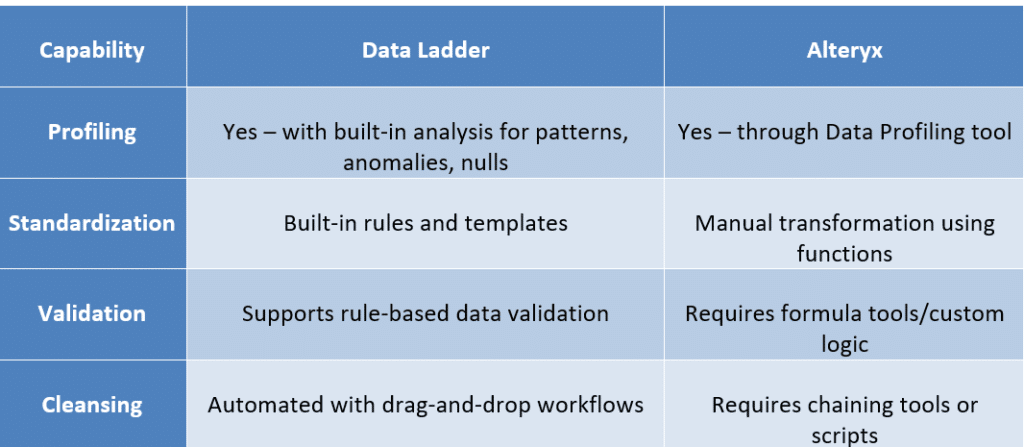
Clean inputs are the foundation of meaningful analytics. With Data Ladder, you ensure clean inputs by fixing data at the source. This is why it stands as a top Alteryx replacement for data cleaning and deduplication, especially for teams looking for a low-code data quality tool with strong rule control.
Scalability and Performance
Alteryx performs well in departmental settings and mid-sized workflows. But as matching complexity increases or record volume grows into the millions, performance and cost can become concerns – particularly without Alteryx Server or Cloud licenses.
Data Ladder’s architecture is built for scale, with:
- In-memory processing engine for speed
- Multi-threaded, distributed job handling
- Support for 100M+ records without the need for additional (external) infrastructure
- Optimization for both batch and real-time processing needs

If you’re looking for a data matching tool that scales better than Alteryx, Data Ladder is a top choice.
Usability and Integration
Both platforms offer visual interfaces and drag-and-drop functionality. However, their user experience caters to slightly different personas.
Alteryx is ideal for data analysts and engineers building multi-step transformations or end-to-end data pipelines. Complex logic is possible with Alteryx but often requires deeper platform fluency.
But when the objective is to clean data fast, Data Ladder takes the lead.
It emphasizes fast, accurate outcomes and prioritizes business-user control by offering:
- Intuitive, visual rule builders
- Prebuilt data matching templates for common scenarios
- Native connectors for Excel, Snowflake, Salesforce, SQL, and more
- Low-code/no-code workflows with scripting options for power users
For users who aren’t data engineers but still need reliable, high-quality outputs, Data Ladder delivers faster time to value. It has long been a preferred Alteryx alternative for non-technical teams.
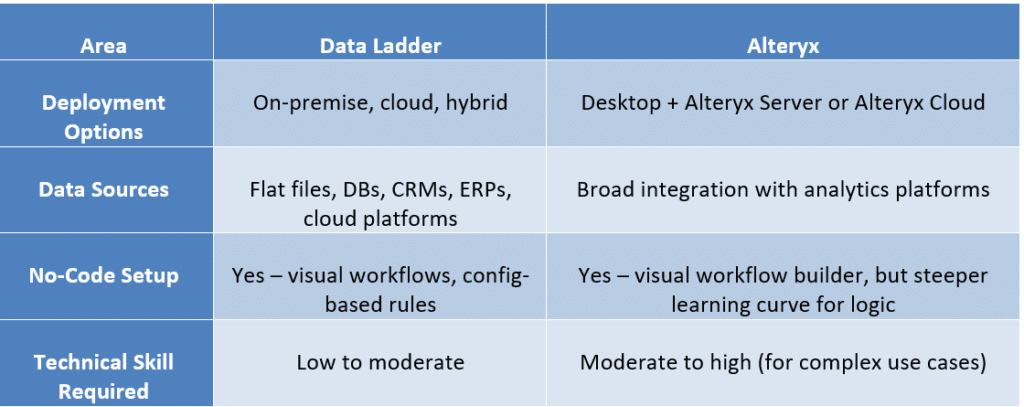
Cost Comparison: Alteryx vs Data Ladder Total Cost of Ownership (TCO)
Alteryx’s per-user or per-workflow pricing can make scaling expensive, especially when advanced data prep requires additional infrastructure or user licenses.
Data Ladder is built differently. It comes with:
- Transparent, flat-rate pricing model
- No seat-based limitations
- Predictable cost even as data volumes and team usage grow
- Lower barrier to start, faster ROI
Data Ladder scales predictably without licensing surprises. This makes it an ideal option for organizations evaluating a low-cost Alteryx alternative for their data quality initiatives.
When to Choose Data Ladder vs. Alteryx
Alteryx is a fantastic tool when your primary need is automating analytics pipelines (and you already trust your data).
But if you’re facing foundational data quality issues, like duplicate records, inconsistent formatting, or poor identity resolution, then no amount of automation will help until those issues are fixed at the source.
Data Ladder was built for this foundational work – profiling, cleansing, standardizing, and matching data at a level Alteryx simply wasn’t designed for. If you’re looking for a data quality software that gets down to the root of your data challenges, Data Ladder is the better fit.
Here’s what sets Data Ladder apart – and make it the best Alteryx alternative for data-first organizations:
- Enterprise-grade matching that goes far beyond basic fuzzy logic
- Fast time-to-value, even without coding skills or heavy setup
- Designed for business and IT users alike – not just analysts
- Lower total cost of ownership
- Scalable to millions of records—without bloated infrastructure or extra licensing fees
Want to see how Data Ladder handles your toughest data problems?
FAQs
1. Is Data Ladder a good Alteryx alternative for data matching?
Yes. Data Ladder is purpose-built for deep data matching and deduplication. It offers advanced matching algorithms and customizable rule logic – without requiring scripting – making it a strong Alteryx data matching alternative.
2. What is the best tool for largescale data deduplication?
Data Ladder is optimized for 100M+ record workloads using in-memory architecture. It offers fast and accurate deduplication at scale.
If you’re looking for a data cleansing and deduplication software that you can trust, Data Ladder is the one.
3. Is Data Ladder a cheaper alternative to Alteryx for data cleansing and matching?
Yes. Data Ladder offers flat-rate pricing. There’s no seat-based fees or volume-based costs, making it a far more cost-effective option for organizations that need to perform data cleansing and matching at scale.
4. Can I use Alteryx and Data Ladder together?
Absolutely. Many organizations use Alteryx for analytics and Data Ladder to clean and deduplicate their data beforehand – to ensure more accurate downstream results.
Data Ladder can seamlessly integrate into your existing tech stack without requiring any re-architecture, making it one of the best data matching tools to use with Alteryx – or any other broader data platform.
5. What industries use Data Ladder?
Data Ladder is used across all industries. However, it is more widely used in industries where data accuracy and identity resolution are mission-critical, such as healthcare, finance, government, education, and retail.




